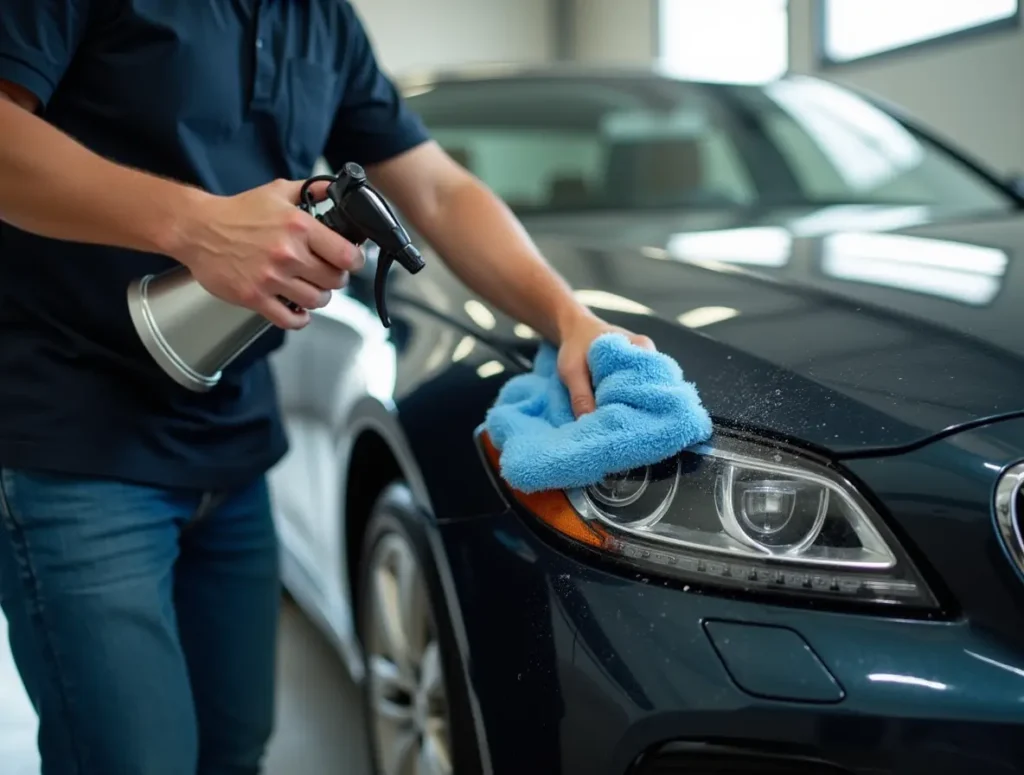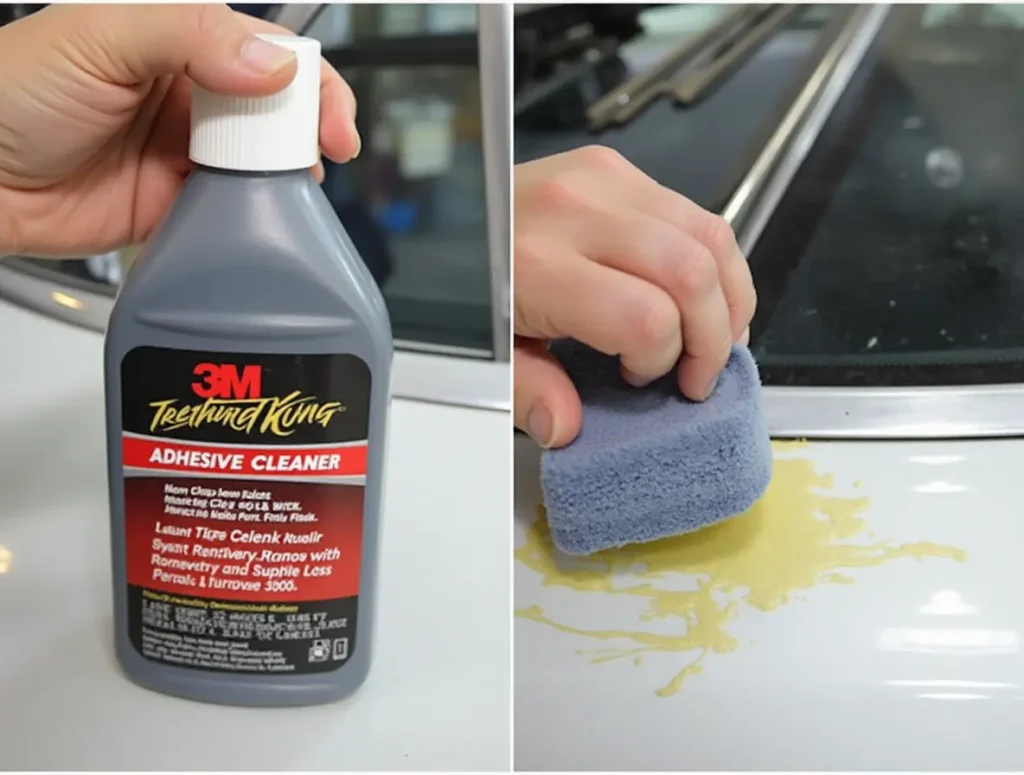Introduction: Why Proper Post-Repair Cleaning Matters
After a collision or bodywork, your car needs more than just a quick wash. Leftover dust, polish residue, and adhesive remnants can damage paint and reduce repair longevity. According to ASE-certified detailers, improper cleaning leads to:
✔ Premature paint fading (from unremoved compounds)
✔ Sticky trim damage (from uncured adhesives)
✔ Corrosion risks (from overlooked metal fragments)
This 1,200-word guide combines:
- Geotargeted tips (climate-specific cleaning)
- Pro detailer techniques (approved by 3M & Meguiar’s)
- Cost-saving DIY methods (vs. professional detailing)
Table of Contents
Essential Post-Repair Cleaning Steps
1. Dust & Debris Removal (0-24 Hours After Repair)

Why? Body shops generate fine dust that scratches surfaces.
How To:
- Use a California Car Duster ($25) for dry particles.
- Compressed air (for door jambs/grilles)
- Microfiber mitt rinse (no rubbing!)
🚗 Pro Tip: “Never wipe dry dust—it’s like sandpaper on clear coat.”
– Mike Phillips, Autogeek Detailing
2. Adhesive & Polish Residue Cleanup
Problem Areas:
- Tape lines (from masking)
- Buffer trails (hazy polish remnants)
Solutions:
| Residue Type | Best Remover |
|---|---|
| Glue | 3M Adhesive Cleaner ($18) |
| Wax | Isopropyl Alcohol (50/50 mix) |
| Compound | Clay bar + lubricant |

3. Paint Decontamination (Critical for New Repairs)
3-Step Process:
- Iron fallout remover (for embedded rail dust)
- Clay bar treatment (pulls bonded contaminants)
- Silica spray sealant (locks in protection)
Climate Considerations:
- Humid regions: Quick-dry products to prevent water spots
- Dry climates: Extra lubrication to avoid marring
Interior Cleaning After Repairs
1. Glass & Plastic Care
- Ammonia-free cleaner (prevents fogging)
- Microfiber waffle weave towel (streak-free finish)
2. Upholstery Stain Removal
For Fabric:
- Folex ($6) for grease stains
- Bissell spot cleaner ($120) for deep cleaning
For Leather:
- Lexol pH-balanced cleaner ($15)
- Avoid silicone-based products (causes cracking)
3. Air Vent & HVAC Sanitizing
- Compressed air + detailing brush
- Lysol HVAC spray (kills mold spores)
Exterior Protection Post-Repair
1. New Paint Care (First 90 Days)
✅ Do:
- Hand wash only (no automatic brushes)
- Use pH-neutral soap (like Chemical Guys)
❌ Don’t:
- Wax before 30-day cure time
- Park under trees (sap stains fresh paint)

2. Ceramic Coating vs. Wax
| Type | Cost | Duration | Best For |
|---|---|---|---|
| Carnuba Wax | $20 | 2 months | Budget protection |
| SiO2 Spray | $30 | 6 months | Easy application |
| Pro Ceramic | $800 | 5 years | Repaired panels |
Professional vs. DIY Cleaning
When to Hire a Pro (150−150−400):
- Paint correction needed (sand marks/swirls)
- Headlight restoration (yellowed lenses)
- Odor removal (smoke/chemical smells)
DIY Savings Checklist ($50 Total):
- Meguiar’s Gold Class Soap ($15)
- Clay bar kit ($25)
- Microfiber towels ($10)
FAQ
Q: What is the best way to clean a car after a body repair?
A: Follow this sequence:
- Dry dust removal (compressed air/microfiber)
- Adhesive cleanup (3M General Purpose Adhesive Cleaner)
- Iron decontamination (CarPro IronX)
- Paint sealant (avoid wax for 30 days)
Q: Can I use a pressure washer on fresh paint?
A: Yes, but:
- Keep nozzle >12″ away
- Use <1,200 PSI
- Skip edge seams (can force water under seals)
Q: How soon can I wax after repairs?
A: Wait 30-90 days (varies by shop). Use spray sealants instead during this period.
Q: Why does my new paint feel rough?
A: Likely overspray or unpolished compound. Clay bar treatment fixes this.
Q: Best product for removing buffer haze?
A: Meguiar’s M205 + foam pad (DA polisher). Test on a small area first.
